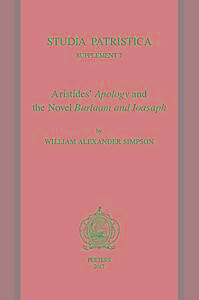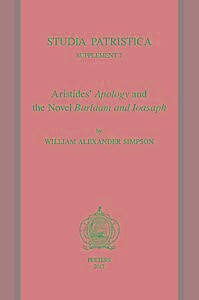
- Afhalen na 1 uur in een winkel met voorraad
- Gratis thuislevering in België vanaf € 30
- Ruim aanbod met 7 miljoen producten
- Afhalen na 1 uur in een winkel met voorraad
- Gratis thuislevering in België vanaf € 30
- Ruim aanbod met 7 miljoen producten
Zoeken
Omschrijving
This study explores the so-called Apology of Aristides as it can be found within Barlaam and Ioasaph (B&I). Scholars have started from the hypothesis (when comparing the Greek B&I version to the Syriac version) that the redactor of B&I has removed details from within the Apology. Although this has a prima facie probability, no scholar has addressed whether this one hundred year old hypothesis holds any truth. In order to understand a text within a framing text, one needs to get a clear idea of the latter, especially its textual form and its core ideas. This allows an insight into the relationship between the two entities. I ask which elements of the Apology entered B&I and have been seen as fitting this framework, which of the linguistic entities and theological ideas are consistent with both the time and content of B&I, and how the Apology reads as part of the overall narrative of the B&I. I explore the role played by this 'added' text in B&I, and why the author or redactor may have chosen to use it. Furthermore, is this text the only fragment that was added to B&I? Once the 'text' of the Apology is understood in its frame, I argue, can we examine how that frame may have impacted on the interpretation of the Apology, and whether and to what extent it may have impacted on the text itself. This answer to the latter question may already have been suggested when looking at how the linguistic entities fit the B&I frame. Finally, I compare the Apology of the B&I with the older Greek papyri of the Apology. A study such as this has never been accomplished, and yet such a study proves essential in understanding the Greek version of the Apology, as it appears in B&I, and how this new information relates to the other versions of the Apology. What we discover is that the redactor has not changed much of the B&I version of the Apology contrary to what previous scholarship suggests.
Specificaties
Betrokkenen
- Auteur(s):
- Uitgeverij:
Inhoud
- Aantal bladzijden:
- 341
- Taal:
- Engels
- Reeks:
- Reeksnummer:
- nr. 7
Eigenschappen
- Productcode (EAN):
- 9789042933705
- Verschijningsdatum:
- 8/05/2017
- Uitvoering:
- Paperback
- Formaat:
- Trade paperback (VS)
- Gewicht:
- 498 g

Alleen bij Standaard Boekhandel
+ 156 punten op je klantenkaart van Standaard Boekhandel
Beoordelingen
We publiceren alleen reviews die voldoen aan de voorwaarden voor reviews. Bekijk onze voorwaarden voor reviews.











